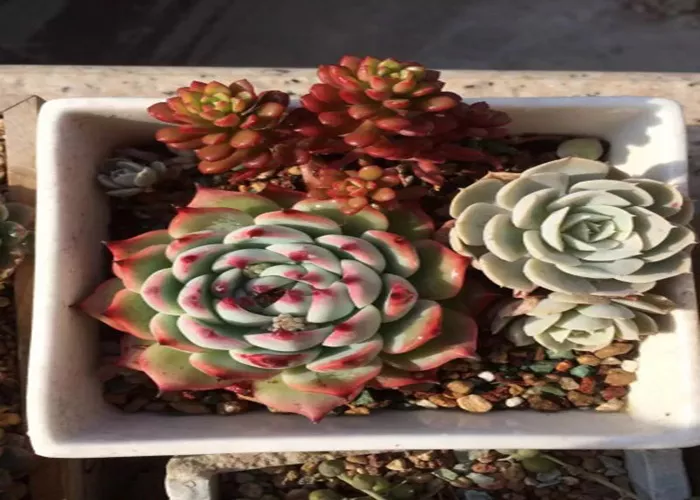Succulent plants are a delightful addition to any garden or indoor space. Their thick, fleshy leaves and stems store water, making them perfect for environments with minimal rainfall. Small succulents, in particular, are easy to care for, making them an excellent choice for beginners or those with busy lifestyles. In this comprehensive guide, we’ll cover everything you need to know about growing small succulent plants, from choosing the right species to creating the perfect growing environment and addressing common issues.
Understanding Small Succulent Plants
Before diving into the specifics of growing small succulents, it’s essential to understand what makes these plants unique. Succulents are a diverse group of plants that have adapted to store water in their leaves, stems, or roots. This adaptation allows them to survive in arid environments with minimal watering. Small succulents, such as echeverias, sedums, and sempervivums, are particularly popular due to their compact size and ease of care.
Choosing the Right Species
When it comes to growing small succulents, one of the most important decisions you’ll make is choosing the right species. Different succulents have unique care requirements, so it’s essential to select plants that match your climate, available space, and personal preferences.
1. Climate Considerations
Small succulents thrive in warm, dry environments. If you live in a region with high humidity or cold winters, you’ll need to choose species that can tolerate these conditions. For example, sempervivums are more cold-tolerant than echeverias, making them a better choice for colder climates.
2. Space Requirements
Small succulents come in a range of sizes, from tiny, single-leaf rosettes to larger, trailing varieties. When choosing your plants, consider the space you have available. If you’re growing them indoors, opt for species with compact growth habits that won’t overtake your living space.
3. Aesthetic Preferences
Succulents come in a wide range of shapes, colors, and textures. Choose plants that appeal to your personal style and will enhance the aesthetic of your garden or indoor space.
Creating the Perfect Growing Environment
Once you’ve selected your small succulents, it’s time to create the perfect growing environment. This involves selecting the right soil, containers, lighting, and temperature conditions.
1. Soil Selection
Small succulents require well-draining soil to prevent root rot. A mix of cactus or succulent soil, perlite, and sand works well. Avoid using garden soil, which can retain too much moisture and lead to root problems.
2. Container Choice
When growing small succulents, containers play a crucial role. Choose pots with drainage holes to allow excess water to escape. Terracotta pots are a popular choice because they’re porous and help regulate soil moisture. However, plastic or ceramic pots can also work well, especially if you’re growing your plants indoors.
3. Lighting Requirements
Small succulents need bright, indirect sunlight to thrive. Place them in a location that receives at least six hours of sunlight per day. If you’re growing them indoors, consider using grow lights to supplement natural light.
4. Temperature Control
Succulents prefer warm temperatures. During the growing season (spring and summer), aim for temperatures between 65 and 85°F (18 and 29°C). In the fall and winter, reduce watering and allow the plants to enter dormancy. If you’re growing them indoors, avoid placing them near heating vents or cold windows.
Planting and Watering Techniques
Now that you’ve created the perfect growing environment, it’s time to plant your small succulents. Follow these steps to ensure a successful planting:
1. Preparation
Fill your containers with the prepared soil mix. Tamp it down lightly to remove any air pockets. If you’re planting multiple succulents in one container, arrange them according to their size and growth habits to create a balanced look.
2. Planting
Remove your succulents from their original pots (if they’re potted) and gently loosen their roots. Plant them in the soil at the same depth they were originally grown. Make sure the crowns of the plants (where the leaves attach to the stems) are just above the soil surface to prevent rot.
3. Watering
After planting, water your succulents thoroughly to help them settle in. Allow the soil to dry out completely between waterings. This can take several days or even a week, depending on the size of your plants and the climate. Overwatering is the most common cause of succulent death, so be careful not to overdo it.
Fertilizing and Pruning
While small succulents don’t require frequent feeding, they will benefit from a light application of fertilizer during the growing season. Use a balanced, water-soluble fertilizer diluted to half the recommended strength. Apply it once a month, or as needed, based on the growth of your plants.
Pruning is generally not necessary for small succulents, as they naturally maintain a compact growth habit. However, if your plants become leggy or overgrown, you can trim them back to encourage new growth. Use sharp, clean pruning tools to avoid damaging the plants.
Conclusion
Growing small succulent plants can be a rewarding and enjoyable hobby. By selecting the right species, creating the perfect growing environment, and providing proper care, you can enjoy a beautiful collection of these unique and adaptable plants. Remember, succulents require patience and attention to detail, but with a little practice, you’ll soon become an expert at growing and maintaining these delightful plants.
Whether you’re a beginner or an experienced gardener, small succulents offer a perfect blend of beauty, durability, and ease of care. With this comprehensive guide, you’ll have all the knowledge and tools you need to succeed in growing your own collection of these charming plants.


